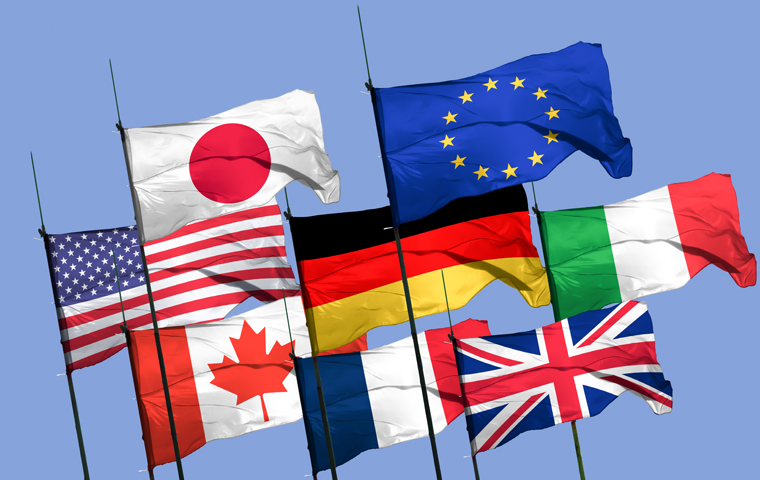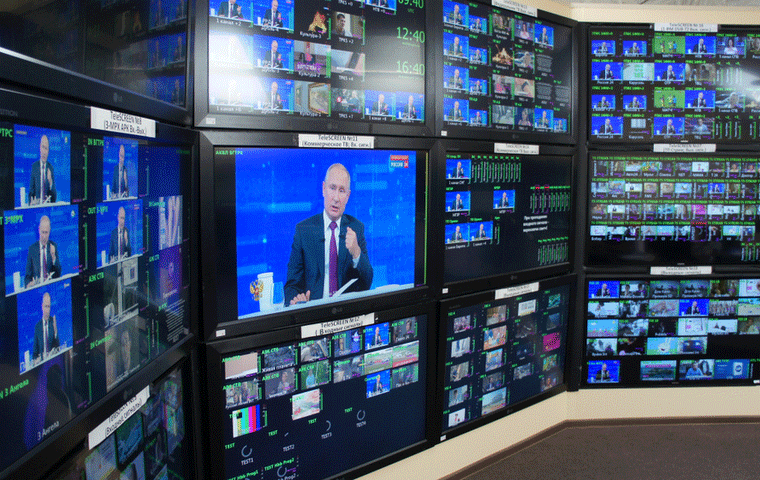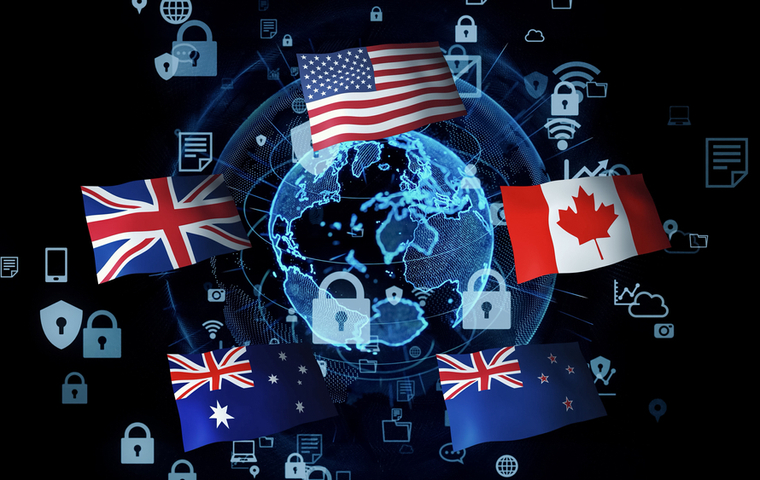Meditating Nuclear Issues in Hiroshima
Related Articles

The 49th G7 Summit in Hiroshima became a noteworthy event that will go down in history. A leader attending the G7 in person while his country is at war with its invading neighbor is unheard of. During my stint as a reporter for the Yomiuri Shimbun, I have covered summits in Japan, the U.S., the U.K., and France, yet I have never encountered such a surprise visit.
The Strong Message from Hiroshima and the Hot Topic of Ukraine
There is no denying that Ukrainian President Volodymyr Zelensky became a magnet for attracting the global media to the Hiroshima Summit. Yet, from my own experience covering prior summits, I have never seen such buildup of attention before the event. I say this, not because I live in Hiroshima and have first-hand view of the growing enthusiasm. Besides the national press from Tokyo and the key TV stations, foreign media also showed heightened interest. The German media even came to cover the paper crane campaign the Hiroshima Television was running. The reason for the stirred-up interest was because this was the “bombed-city summit” in Hiroshima that suffered humanity’s first horror of a nuclear weapon use. Moreover, this was amid Russian President Vladimir Putin’s repeated nuclear threat as he remarked, “This is not a bluff.” The strong message from Hiroshima combined with the immediacy of the Ukraine situation created high publicity, reaching boiling point with the surprise visit by Zelensky.
As the hosting city for this summit, Nagoya and Fukuoka were also bidding alongside Hiroshima. Some argue that Kishida chose Hiroshima because it was his home constituency, but that is a skewed take, linking everything to politics.
It was a few days after the Russian invasion of Ukraine on February 24, 2022, when Kishida privately made up his mind to hold the summit in Hiroshima. If the summit was to be in “retreat style” at a resort, like the recent cases hosted by other countries, selecting a site would have been much easier. But with Hiroshima as the venue, there would be no point in holding a summit in the bombed city, without a ceremony at the Peace Memorial Park and a visit to the Peace Memorial Museum. Naturally, prior consent needs to be obtained from the attending nations. The main venue was the seaside Grand Prince Hotel, which was easy to safeguard, but the Peace Memorial Park is at the heart of the city, making it an urban summit.

Following Kishida’s decision, the “explanation” to the U.S. White House began behind the scenes. The approval of the U.S., a nuclear power and the “only country that dropped the atomic bomb,” was essential. Since there was already the case of President Barack Obama’s visit to the city in May 2016, Washington gave the nod by late March. France was the tough one. Since the days of President Charles de Gaulle, France has always kept a distance from the U.K. and the U.S. in diplomatic and security policies, so the Japanese Foreign Ministry took special care negotiating with Paris. Minoru Terada, then Special Advisor to the Prime Minister on nuclear disarmament and non-proliferation said, “We explained the significance of holding the summit in Hiroshima, and carefully persuaded them to gain their understanding, because regarding nuclear weapons, France has a different stance from other nuclear powers.” Thus, with these efforts, Hiroshima as the summit venue was officially announced in late May 2022, coinciding with U.S. President Joe Biden’s visit to Japan.
From “Just Obama” to Other Heads of States Visiting Hiroshima
Obama’s 2016 visit is the only example of the head of a nuclear nation setting foot on the bombed city of Hiroshima. Richard Nixon and Jimmy Carter had also visited the city, but neither was in office at the time, having lost the presidential elections. From the other nuclear superpower, Russia, Mikhail Gorbachev visited Hiroshima in 1992. But it was a year after he left office following the dissolution of the Soviet Union. At the meeting with citizens organized by Hiroshima Television, he said, “I respect the fact that Hiroshima has not remained silent and has continued to sound the alarm of ‘No More Hiroshimas.’” He also stressed the three points of: (1) linking politics with ethics, (2) everyone abiding by international law, and (3) valuing justice. These are the very words that should be addressed to today’s Putin. However, a former president’s words lack authority. It must be the sitting heads of state since they are the ones with a finger on the nuke button while positioned to proceed with disarmament talks.
At the Hiroshima Summit, the leaders of the U.S., France, and the U.K. faced the “realities of the atomic bombing” together. Germany and Italy that participate in U.S. nuclear sharing, as well as India, also joined in.
Jawaharlal Nehru, who became India’s first prime minister when the country gained independence from Britain after World War II, visited Hiroshima in October 1957 with his daughter Indira Gandhi. As a member of the Non-Aligned Movement, Nehru strongly opposed nuclear arms and nuclear testing by the U.S. and the Soviet Union. He appealed to the world in front of 30,000 Hiroshima citizens, saying that greater horrors appear to be in stock for humanity unless atomic and hydrogen bombs are banned with conscience. Yet, 17 years later, India conducted a nuclear test in 1974 during the administration of Nehru’s daughter Indira Gandhi, and became the sixth nuclear power after the U.S., the Soviet Union, the U.K., France, and China. Since then, no Indian leader had visited Hiroshima or Nagasaki.
For this summit, Kishida invited Prime Minister Narendra Modi from India, which holds the G20 presidency. More than 60 years after Nehru’s visit, the Indian prime minister facing the reality of the atomic bombing at the Memorial Museum had great significance.
Worthwhile Joint Visit to the Cenotaph by Japan and South Korea
The South Korean President Yoon Suk Yeo visiting Hiroshima and praying for the A-bomb victims was another meaningful event. In the final years of World War II, many people were drafted from the Korean Peninsula and worked in the military towns of Hiroshima and Nagasaki. When the atomic bomb was dropped, about 20,000 Koreans are said to have died in Hiroshima, but the figure is only an estimate, and the details are unknown. The cenotaph is engraved with the words: “The Korean victims were given no funerals or memorial services and their spirits hovered for years unable to pass on to heaven.” This means it took 25 years after the bombing for the Monument in Memory of the Korean Victims of the A-bomb to be erected, initially placed across the river from the Peace Memorial Park. It had to wait another 30 years until 1999 to be transferred inside the park. This was because some opposed placing the Korean cenotaph in the Peace Memorial Park, which is managed by Hiroshima City—a tragic history of the bombing combined with discrimination.
Furthermore, there are Chinese and Korean sentiments that Hiroshima and Nagasaki only emphasize their own A-bomb sufferings and fail to see Japan’s wartime aggression in China and the Korean Peninsula. This explains why, although many leaders have visited Japan from South Korea and China, none have offered prayers to the victims in Hiroshima and Nagasaki.
This time, Yoon was invited to the G7 summit and came to Hiroshima. Together with Kishida, he prayed not only at Hiroshima City’s cenotaph but also at the Monument in Memory of the Korean Victims of the A-bomb. The only time a Japanese prime minister visited the Korean monument was in 1999, when Prime Minister Keizo Obuchi paid his respects following its relocation to the Peace Memorial Park. This time is, of course, the first joint visit by the Japanese and South Korean leaders. It is an epoch-making event that symbolizes a new relationship between the two countries, transcending the historical rift during and after World War II. As a byproduct of the summit, it is too great an achievement.
How to Interpret the Hiroshima Vision
Each G7 Summit adopts various outcome documents. This time, a total of 10 were adopted, including related documents, such as the “G7 Hiroshima Leaders’ Communiqué,” which summarizes the summit, the “G7 Leaders’ Hiroshima Vision on Nuclear Disarmament” and the “G7 Leaders’ Statement on Ukraine,” which were compiled into separate documents for the first time. Among them, the Hiroshima Vision is particularly noteworthy, yet A-bomb survivor groups and others have voiced complaints, criticizing that there is no mention of “nuclear abolition” and that it does not provide a road map for nuclear abolition.
Did the G7 ignore the voices of Hiroshima? Let us first define the terms. “Abolition” means “eliminating” or “extinction;” “disarmament” means “reducing” the number of nuclear warheads and missiles which are means of transport; “nuclear nonproliferation” literally means no increase of nuclear states or deployed states; “no use” means not using nuclear weapons; and “threat” means threatening to use nuclear weapons. When Russian President Vladimir Putin repeatedly threatens Ukraine with nuclear weapons and presses his point by saying, “This is not a bluff,” he is exactly “threatening” to “use nuclear weapons,” and his attempt to deploy them in neighboring Belarus is “proliferation.”
Now that we have defined the terms, let us interpret the Vision in detail. The main points are as follows:
- The first G7 Leaders’ document with a particular focus on nuclear disarmament
- Reaffirm the commitment to “achieving a world without nuclear weapons with undiminished security for all”
- Underscore the importance of the 77-year record of non-use of nuclear weapons
- Russia’s irresponsible nuclear rhetoric and stated intent to deploy nuclear weapons in Belarus are unacceptable
- Recall the statement in Bali (Indonesia) of all G20 leaders, including Russia, and reiterate the position that threats or use of nuclear weapons are inadmissible
- Recall the Joint Statement of the Leaders of the Five Nuclear-Weapon States (including Russia) issued on January 3, 2022, on Preventing Nuclear War and Avoiding Arms Races, and call on Russia to recommit—in words and deeds—to the principles enshrined in that Statement
- Our security policies are based on the understanding that nuclear weapons, for as long as they exist, should serve defensive purposes, deter aggression, and prevent war and coercion.
The Hiroshima Vision mentions that the overall “decline in global nuclear arsenals” achieved since the end of the Cold War must continue and “not be reversed.” It also states that the Treaty on the Non-proliferation of Nuclear Weapons (NPT) must be upheld as the “cornerstone” of the global nuclear non-proliferation regime, stressing the significance of “non-proliferation.” Additionally, it reaffirms the commitment to the ultimate goal of “a world without nuclear weapons” achieved through a realistic, pragmatic and responsible approach. Thus, the Hiroshima Vision refers to “a world without nuclear weapons” (abolition), “disarmament,” “non-proliferation,” “non-use,” and “no use of threat.”
Some critics argue that it does not state any specific “roadmap” for “a world without nuclear weapons.” However, the Hiroshima Vision calls on Russia, which decided to undermine the New START Treaty, the only nuclear weapons treaty between the U.S. and Russia, to return to full implementation of the Treaty. Towards China, it requests transparency, such as disclosure of nuclear weapons and fissile material possession. As for North Korea and Iran, it demands the implementation of UN Security Council Resolutions (UNSCRs). Therefore, the Vision surely mentions the “roadmap.” It certainly does not have a schedule in place, but since it involves counterparts like Russia, G7 alone cannot set the schedule.
In its closing remarks, the Hiroshima Vision encouraged other leaders, youth, and people from around the world to visit Hiroshima and Nagasaki, specifically requesting the engagement by young people, women, and civil society. Given these statements, criticizing the Vision for not mentioning nuclear abolition is rather a crude argument. Also in recent years, there are diverse views toward nuclear weapons among A-bomb survivors and the second generation, and many frankly praise the outcomes of the summit.
At the G7 Summit’s summary press conference in front of the cenotaph, Kishida affirmed, “Pursuing an ideal is different from dreaming. An ideal is something we can strive to attain.” Being well aware that it requires more than slogans to advance the nuclear issue, he said, “let us take realistic steps, one by one,” and showed a glimpse of the determination of an incumbent politician.
Hiroshima’s “Three Wishes” Granted
In the lead-up to the summit, the locals of Hiroshima had been yearning for the G7 leaders to do “three things” for perceiving the reality of the atomic bombing. They were: (1) lay wreaths at the park’s cenotaph, (2) visit the Peace Memorial Museum, and (3) listen to the testimony of an A-bomb survivor. For the testimony, Keiko Ogura, 85, was chosen from several candidates. In her self-taught English, Ogura spoke ardently about her experience, identifying herself with Sadako Sasaki, who was exposed to the bombing at the age of two and died of leukemia 10 years later. Ogura said, “Please feel as a human being, and relive the experience as if it were your own.” The leaders shook hands with her and expressed their appreciation. “We spent double the time scheduled,” said Ogura. All with solemn expressions, the leaders left the museum. Some, including French President Emmanuel Macron and Italian Prime Minister Giorgia Meloni, seemed to dab their eyes as they laid the wreaths. The longing of the Hiroshima locals for world leaders to “experience the realities of the atomic bombing” was fulfilled.
Obama had spent 10 minutes at the Peace Memorial Museum. This time, the G7 leaders were there for 40 minutes, but the head of the A-bomb survivor group was dissatisfied with this, saying, “It is still too brief.” However, I can understand a part of that feeling, because the media were shut out during the museum visit by the leaders, conforming too much to Washington’s requests. The British, French, and Indian leaders, as well as Zelensky, have commented on social media about what they saw and felt in Hiroshima. So, on this point, there is room for consideration for both the Japanese government and Hiroshima City that manages the museum.
Expectations for the Second “Obama Effect”
As we have seen, the “bombed-city summit,” which coincided with the Ukraine crisis, attracted huge media attention at home and abroad. Foreign media had arrived in Hiroshima ahead of the event, and even during the summit, besides the main reporting, conveyed the present-day “real Hiroshima“ to the world. The beautiful islets of Setonaikai, the famous oysters, okonomiyaki, and the paper crane were all introduced to the world. This will certainly bring in tourists from abroad. It is already proven with Obama’s visit to Hiroshima, followed by a surge of tourists from the U.S. and Europe.
The words the G7 leaders wrote in the museum’s guestbook and the bomb-surviving cherry tree (Somei Yoshino) planted at the ceremony are also likely to attract attention. The leaders and their spouses visited Miyajima, another World Heritage site, and posed for a shot in front of the vermillion torii gate of the Itsukushima Shrine. If the synergy from these events creates a wave of inbound tourism, the “reality of the atomic bombing” will spread to the grass-roots level. As the world gets to know more about Hiroshima, the bombed city and the modern city that was revived from the ruins, it may serve as a message of encouragement and solidarity to the devastated citizens of Ukraine or refugees who have fled to other countries. The outcomes of the G7 Hiroshima Summit may be multifaceted.
This is a translation of the Japanese article published in vol. 79 (May/Jun. 2023) of the Gaiko (Diplomacy) magazine.
Hideaki Miyama is an advisor at Hiroshima Television Corporation and a Distinguished Visiting Professor at Hiroshima University. As a graduate of Waseda University, he joined Yomiuri Shimbun. After serving as the Washington correspondent and political editor, he joined Hiroshima Television as the president, then became the chairman. He is the author of Sekai no riida 185 nin Hiroshima, Nagasaki de hasshita kotoba [The Words of 185 World Leaders Spoken in Hiroshima and Nagasaki] and other books.




